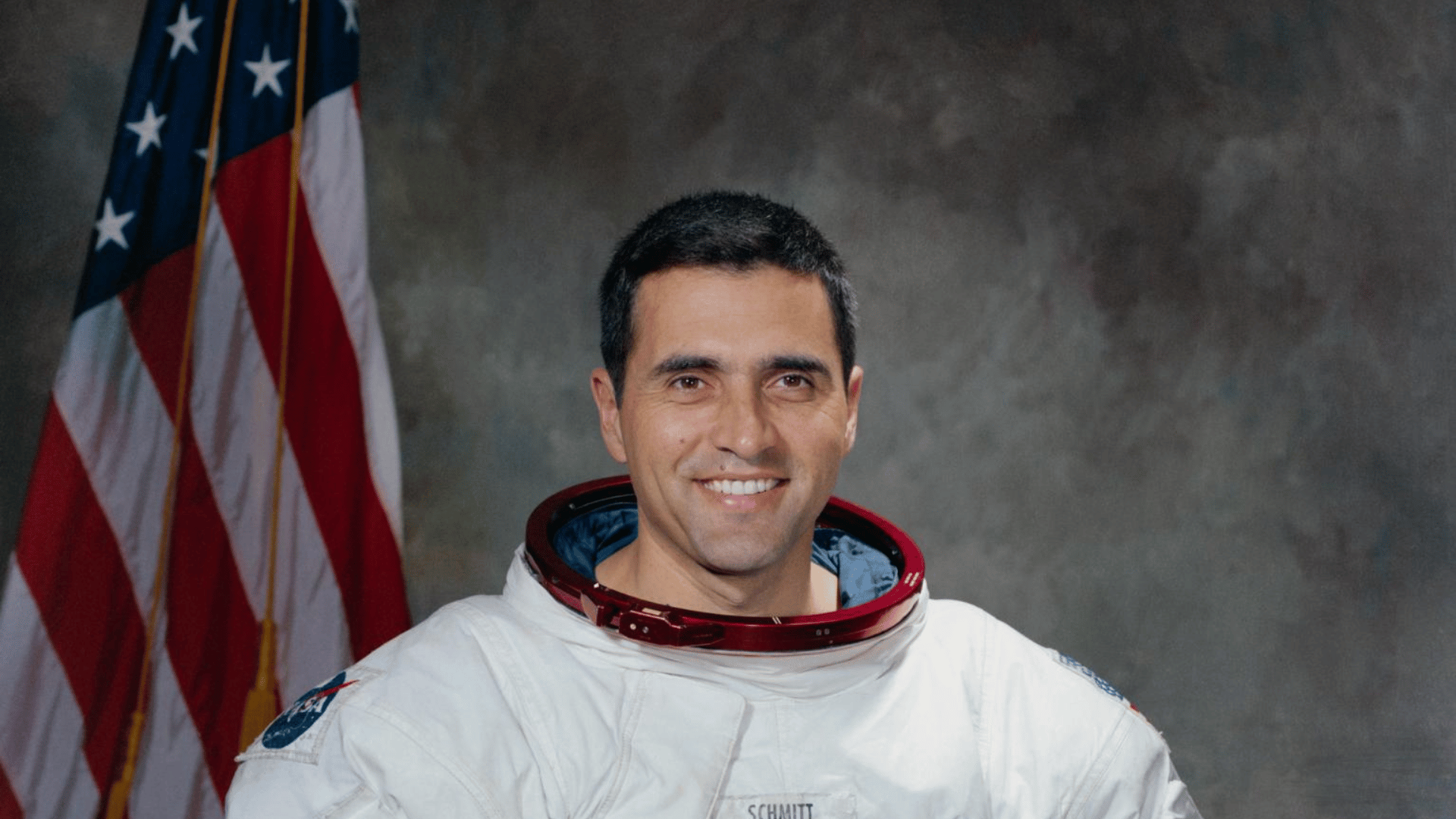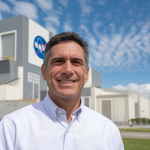Have you ever wondered what it would be like to explore the Moon as a scientist? Harrison Hegan Schmitt made that dream come true.
He became the only scientist to ever walk on the Moon’s surface.
Schmitt wasn’t like other astronauts. While most were military pilots, he was a rock expert, called a geologist.
He spent over 22 hours exploring and collecting Moon rocks. His scientific training helped him pick the best samples to bring back to Earth.
Want to learn more about this incredible Moon explorer? Keep reading his full story!
Who is Harrison Schmitt?
Harrison Schmitt is a former NASA astronaut and geologist who has the distinction of being the only scientist-astronaut to walk on the Moon. Here are the key details about him:
Unlike most astronauts who were military test pilots, Schmitt was a civilian geologist with a PhD from Harvard University.
After his NASA career, Schmitt entered politics, serving as a U.S. Senator from New Mexico from 1977 to 1983 as a Republican.
He remains the only person with a scientific background to have walked on the Moon, making him particularly significant in the history of space exploration and lunar science.
His geological expertise was crucial for selecting rock samples and conducting field observations that greatly contributed to our understanding of the Moon’s composition and history.
Harrison Schmitt’s Early Life & Education
Harrison Hagan Schmitt, often called “Jack” Schmitt, was born on July 3, 1935, in the small mining community of Santa Rita, New Mexico, and grew up in Silver City.
Schmitt attended Western High School in Silver City, where he excelled academically and demonstrated a strong aptitude for science and mathematics.
In 1957, Schmitt earned a Bachelor of Science degree in Geology from the California Institute of Technology (Caltech).
After Caltech, Schmitt was awarded a Fulbright Scholarship and spent 1957–1958 at the University of Oslo in Norway, studying geology and developing an international perspective on earth.
Before joining NASA, Schmitt worked with the U.S. Geological Survey’s Astrogeology Center in Flagstaff, Arizona.
Harrison Schmitt’s Path into NASA’s Astronaut Corps
In June 1965, Harrison Schmitt was chosen as part of NASA’s first group of scientist-astronauts.
Schmitt’s expertise as a trained geologist made him a standout candidate, especially as NASA sought to maximize the scientific return from its Apollo missions.
- Flight School: Learning to fly jet aircraft to develop quick decision-making and spatial awareness.
- Survival Training: Preparing for emergency landings in desert, jungle, and ocean environments.
- Spacecraft Systems & Simulators: Mastering the Apollo spacecraft’s systems, procedures, and emergency protocols.
- EVA & Rover Training: Practicing extravehicular activities (moonwalks) and lunar rover operations in simulated lunar terrain.
Harrison Schmitt’s Role in the Apollo 17 Mission


Image Source: Hack the Moon
Apollo 17, launched on December 7, 1972, was the last mission of NASA’s Apollo program and remains the most recent crewed journey to the Moon.
It carried a uniquely historic crew: Commander Eugene Cernan, Command Module Pilot Ronald Evans, and Lunar Module Pilot Harrison Schmitt, the only professional geologist ever to walk on the lunar surface.
Key Mission Facts:
- Total Mission Duration: 12 days, 13 hours, 51 minutes
- Time on Lunar Surface: 3 days, 2 hours (the longest of any Apollo mission)
- Number of Moonwalks (EVAs): 3, totaling 22 hours, 4 minutes
- Distance Traveled in Rover: ~35 kilometers (22 miles)
- Samples Collected: Over 110 kilograms (243 pounds) of lunar material, the largest haul of the Apollo program
Historic Achievements:
- Cernan and Schmitt became the last two humans to walk on the Moon.
- The mission set records for longest lunar surface stay, longest EVAs, and most samples collected.
- Schmitt’s geology expertise elevated Apollo 17’s scientific return, with precise descriptions, sampling strategies, and in-situ analysis.
Political Career of Harrison Schmitt


Image Source: Politico
After returning from the Apollo 17 mission, Harrison Schmitt transitioned from space exploration to public service. In 1975, he resigned from NASA to pursue a career in politics, motivated by a desire to influence national science and energy policy.
He ran as a Republican candidate for the U.S. Senate from his home state of New Mexico.
Committees and Focus Areas:
- Advocating for investment in research, space exploration, and science education.
- Promoting responsible development of natural resources, with particular interest in nuclear power and space-based energy sources like lunar helium-3.
- Supporting policies aligned with Cold War–era security concerns.
Legislative Efforts:
- Strong support for continued U.S. leadership in space exploration.
- Advocacy for energy innovation, including nuclear energy and resource development.
- Calls for economic development in the Southwest, especially projects that could benefit New Mexico.
Recognition and Landmarks Named for Harrison Schmitt
His achievements have earned him some of the highest national and NASA honors, as well as recognition from universities, scientific organizations, and even celestial naming.
1. NASA and Apollo Awards
Harrison Schmitt’s role in Apollo 17 didn’t just make history; it also earned him some of the highest honors NASA can bestow.
- NASA Distinguished Service Medal (1973): Awarded for his service as Apollo 17 Lunar Module Pilot and contributions to lunar geology.
- NASA Exceptional Service Medal: Recognizing his work in astronaut training and scientific leadership.
- Presidential Medal of Freedom (1973): Presented by President Richard Nixon to the Apollo 17 crew for their historic mission.
2. National and International Recognition
Harrison Schmitt’s contributions have resonated far beyond NASA, earning him recognition from scientific communities, governments, and academic institutions around the world.
- U.S. National Academy of Engineering (1984): Elected for his contributions to engineering and space science.
- Honorary Doctorates: Received from several universities worldwide for achievements in geology, space exploration, and public service.
- Awards from Geological Societies: Recognized by professional organizations for advancing planetary geology and lunar science.
3. Features Named in His Honor
Harrison Schmitt’s legacy extends beyond the history books; his name is literally written in the stars and on the lunar surface. Several celestial and terrestrial features honor his groundbreaking contributions to geology, space exploration, and public service.
- Asteroid 19323 Schmitt: A main-belt asteroid named after him in recognition of his contributions to planetary science.
- Schmitt Crater (on the Moon): A small lunar crater near the Taurus–Littrow landing site, named in his honor.
- Educational Facilities: Schools, labs, and space science centers have dedicated programs and rooms bearing his name.
Conclusion
Harrison Schmitt’s life shows us that dreams can come true with hard work and learning. He went from studying rocks in New Mexico to walking on the Moon itself.
His life demonstrates that science and exploration are inextricably linked. Schmitt’s work helped us learn important things about the Moon and space.
The rock samples he collected are still being studied today by scientists around the world. After leaving NASA, he served his home state as a Senator and continued teaching others about space.
His story reminds us that curiosity and education can take us to amazing places. Harrison Schmitt truly is a hero of both science and space exploration.


















